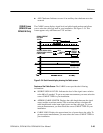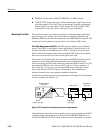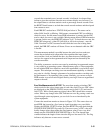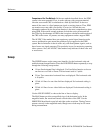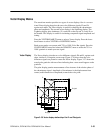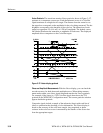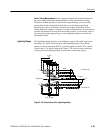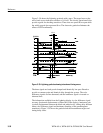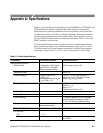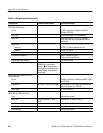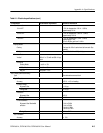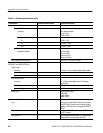
Reference
WFM 601A, WFM 601E & WFM 601M User Manual
3–57
Luminance Gain Measurement. The signal is driven along the vertical axis above
and below the center box by the luminance signal. The lower half is driven down
from the center. The luminance gain is correct when the center dot (clamped
black level) is centered in the target box and the positive and negative excursions
end at the top and bottom of the graticule. Perfect monochrome signals appear as
a thin vertical line. Any deviation or bending off the center line indicates a color
variation from the monochrome setup of the display monitor. Luminance gain
alone can be measured more accurately in either the Waveform or Parade display
modes.
Interchannel Timing Measurement. The scale (sequence of dots) between the green
and magenta targets provides a way to check interchannel timing (CH-2 to CH-1
and CH-3 to CH-1) or signal delay. If the color difference signal is not coincident
with luminance, the transitions between color dots will bend. The amount of this
bending represents the relative signal delay between luminance and the color
difference signal. The upper half of the display measures the P
b
-to-Y timing,
while the bottom half measures the P
r
-to-Y Timing. If the transition bends in
toward the vertical center or black region, the color difference signal is delayed
with respect to luminance. If the transition bends out toward white, the color
difference signal is leading the luminance signal.
Pr and Pb Gain Measurement. The horizontal deflection of the top half of the
display is an indication of the P
b
gain and the lower half indicates the P
r
gain. If
the color bar signal dots are within the horizontal dimensions of the appropriate
graticule targets, the P
b
and P
r
gains are within 2% of the correct amplitude.
Since the vertical and horizontal dimensions of the graticule target boxes indicate
2% luminance and color difference gain errors, respectively, you can evaluate
each color bar for encoding accuracy with these limits. The Lightning display
shows the relative level or coding accuracy for Y, P
b
, and P
r
for each of the eight
primary colors much better than the Parade display mode.



